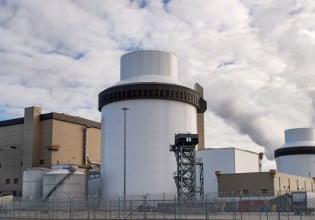Researchers Develop Integrated Pumped Hydro Reverse Osmosis System
A new reverse osmosis system could solve challenges surrounding energy consumption used for water desalination.
The growing global demand for freshwater, exacerbated by droughts, increased urbanization, and uneven distribution of freshwater resources, has led to an urgent need for innovative solutions. Reverse osmosis (RO) desalination plants effectively convert saline water into drinking water but are energy-intensive, often relying on fossil fuels.
Desalination plant in California. Image used courtesy of California Department of Water Resources
Recently, a team at Cornell University investigated desalinating water without fossil fuels. This article examines the challenges facing water desalination and the implications of the Cornell research.
Desalination
Desalination, particularly through RO, has emerged as a pivotal solution in the global quest to mitigate water scarcity.
This technology filters salt and other impurities from seawater to produce fresh water and is particularly crucial in arid regions where freshwater resources are over-exploited or contaminated. Despite its significance, the conventional RO process is energy-intensive, often dependent on fossil fuels, contributing to carbon emissions and raising sustainability concerns.
A depiction of the reverse osmosis process. Image used courtesy of Elimelech et al.
The energy demand of RO systems is primarily attributed to the high-pressure pumps required to force seawater through semipermeable membranes. This process is effective in salt separation, but it demands a substantial amount of electrical power. In regions dependent on fossil fuels, the process exacerbates the environmental impact. This energy challenge has spurred the search for more sustainable and energy-efficient desalination methods.
Cornell’s Reverse Osmosis Research
To solve this challenge, a group of researchers at Cornell University investigated a new technique for reverse osmosis.
At the heart of their methodology was creating a reverse osmosis model tailored to the unique conditions of the model, called the Integrated Pumped Hydro Reverse Osmosis System (IPHROS). This model was designed to predict the performance of the RO process under the specific hydraulic conditions provided by the pumped storage hydropower (PSH) system. The key to this model was its focus on the Seamaxx-440, a specific RO element, for which they developed surrogate models to predict parameters like permeate flow rate and salt rejection rate. These predictions were vital for optimizing the system's operational efficiency, as they directly influenced the amount of seawater that could be effectively desalinated and the energy recapture potential of the system.
The researchers employed a multiobjective genetic algorithm for the optimization process. This approach allowed them to consider multiple factors simultaneously, such as maximizing freshwater production while minimizing energy consumption. The result was a more efficient system that reduced the break-even time by 16% compared to separate implementations of PSH and RO.
The optimized IPHROS system generated approximately 79.5 million kWh of energy and provided 5.79 million cubic meters of fresh water annually.
A More Sustainable Future
The research on IPHROS marks a significant advancement in energy storage and water desalination. First, the IPHROS presents a viable solution to regions facing water scarcity by offering a method to produce freshwater in an environmentally friendly manner. Secondly, it addresses the challenge of storing energy from renewable sources, a significant hurdle in the global shift towards sustainable energy. The ability to store energy in the form of water potential and use it for desalination adds a valuable dimension to energy management strategies, especially in areas with fluctuating renewable energy sources like solar and wind.








